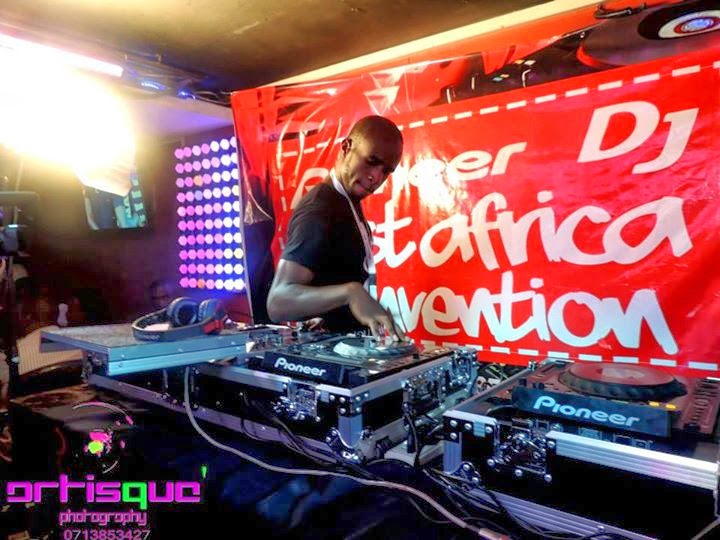Art Space Key Defence Zone For Liberties
The censor alleged that the work had
to be pulled down for being ‘too graphic for children’
The three artists,
Michael Soi, Patrick Mukabi and Joseph Bertiers and a group of others had been
encouraged by the show’s curator to make works as per the theme only to be told
one day before the exhibition that their works could not be shown at the Museum
space.
This censorial
action now adds the National Museum of Kenya to the list of state agencies that
have a disputatious relationship with the creative sector after the Kenya Films
and Classification Board (KFCB) was forced to recall a draconian legislation it
had drafted to regulate the sector in November 2016.
In an interview with
the BBC’s Focus on Africa programme, Dr. Mzalendo Kibunjia, Director-General of
the National Museums of Kenya, claimed that the museum disapproved of the
censored artworks to protect visiting children from such content.
 |
| Banned - This painting by Michael Soi. PHOTO | FRANK WHALLEY |
Those opposed to the
move have questioned why the museum could not arrange to have a classification
of the works to be displayed as a way of regulating the audience that would
access work that had radical or adult content.
There has been no
response from the museum regarding this proposition.
The increase in
censorial currents particularly targeting artists is a manifestation of the
shrinking civic space in Kenya and the region. Art can be used to highlight
insufficiencies in governance and popular notions of morality in a more vivid
manner through visual, installation, and audio works that target certain
individuals or society in general.
One of the censored pieces
that had been used in the show’s promotional material illustrates through
cartoony figures, a man dressed in a religious habit and the other in a suit
kissing and fondling each other.
It is a work of art
that casts aspersions at the integrity of the church and hints at its
complicity in the general moral decadence of the state as an institution.
All the same,
regulation of artistic content has to abide by the constitution and
international standards. Under Article 33(b), the constitution of Kenya
explicitly guarantees the freedom of artistic creativity and goes ahead in part
(d) to explicate the impermissible forms of speech.
International
standards are clear that limitations based on ‘public morals’ must not be
applied in a discriminatory fashion and must meet the three part test of
legality, legitimacy, and necessity.
State agitations for
the adoption of a creative content regulation legal framework were frustrated
last year by defragmented opposition from the creative sector when a draconian
draft review of the Films and Stage Play Act Cap 222 was rejected by the
sector.
In the prevailing
policy lacuna with regard to regulation of creative content, censorship will
manifest through spatial regulation of artistic speech. In the shrunk civic
space, artists will have fewer state controlled spaces where they can practice
or show their work.
This will reduce the
visibility of artwork in easily accessible public spaces as artists will now
retreat to private exhibition venues which are still generally inaccessible to
all because of their elitist character.
Essentially, the
regulation of locations where artists can show their works is the surrogate for
the regulation of content. All these denigrate the role and appreciation of
arts in society.
In recent years, the Kenya Films and
Classifications Board (KFCB) has harangued Kenyans with moralist and
overzealous statements on regulation of creative content. This latest act of censorship has to be
analyzed in the context of that repetitive admonition of overcritical content
especially in online spaces.
The National Museum, gallery spaces,
and other spaces where art is housed and exhibited ought to be sensitized that unconstitutional
censorship has a chilling effect on the freedom of artistic expression in the
country.
In Tanzania’s much declined freedom of
expression space, there have been arrests and detainments of artists. In March
2017, popular rapper Neyo Wa Mitego was arrested and detained briefly for
criticizing the president’s dictatorial style of leadership in his song. Others
who have undergone harassment at the hands of police and other state agents are
Roma Mkatoliki in 2017 and Vitali Maembe in 2016 who was arrested for leading a
protest calling for accountability and transparency in spending at an art
school in Tanzania.
Such actions are meant to denigrate
the role of artists in society even as they remain a critical voice in the
region’s civic space by increasingly call out the leadership’s misdeeds.
On the other hand, KFCB should expedite
the revision of the Films and Stage Plays Act (Cap 222) to reflect conformity
to Kenya’s international obligations on speech regulation.



Comments